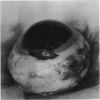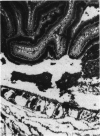Abstract
The closure of 2 or more vortex veins in rabbits' eyes results in a persistent rise in intraocular pressure. In these circumstances a small opening into the anterior chamber at the corneoscleral limbus resulted in an iris prolapse, while a larger limbal wound was immediately followed by a massive choroidal expulsive haemorrhage. It appears from this experimental study that a definite and persistent rise in intraocular pressure could be a sign of impaired venous outflow and that the occurrence of an iris prolapse after small limbal opening into the anterior chamber should prompt us to examine the fundus of the eye and look for a choroidal complication. It is possible that the present set of experiments is relevant to the mechanism of expulsive haemorrhage in man.
Full text
PDF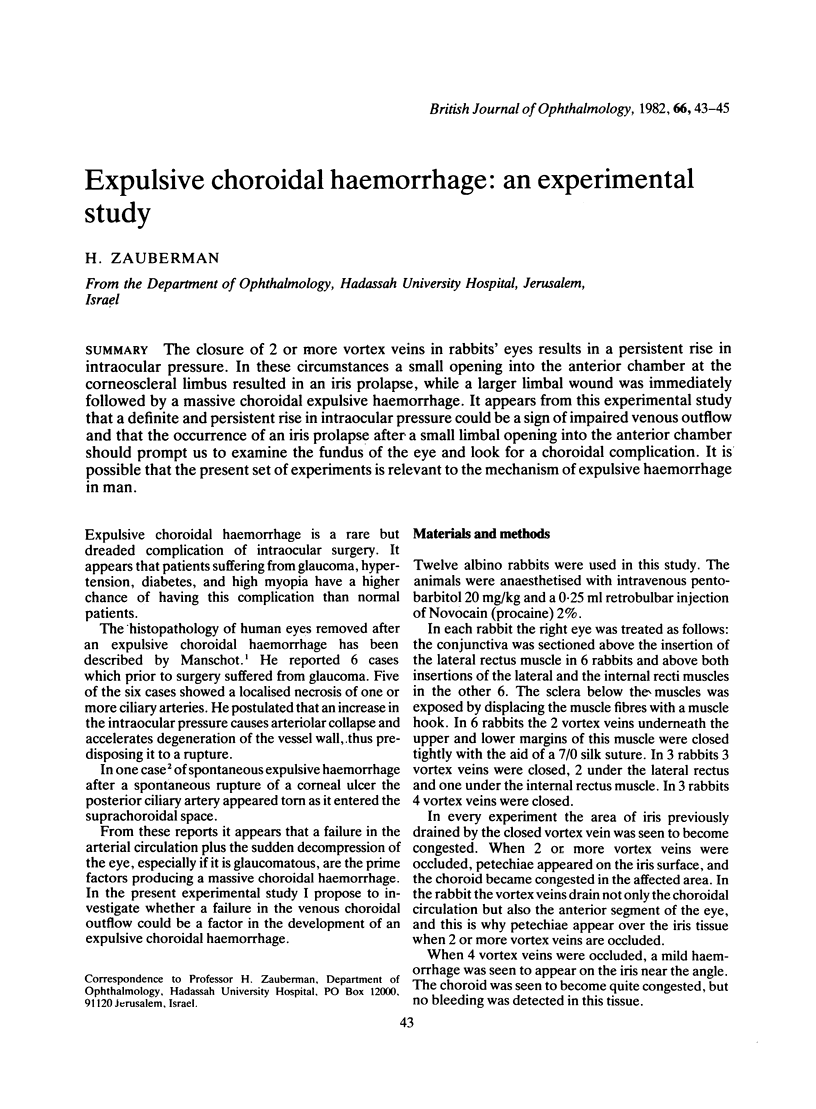
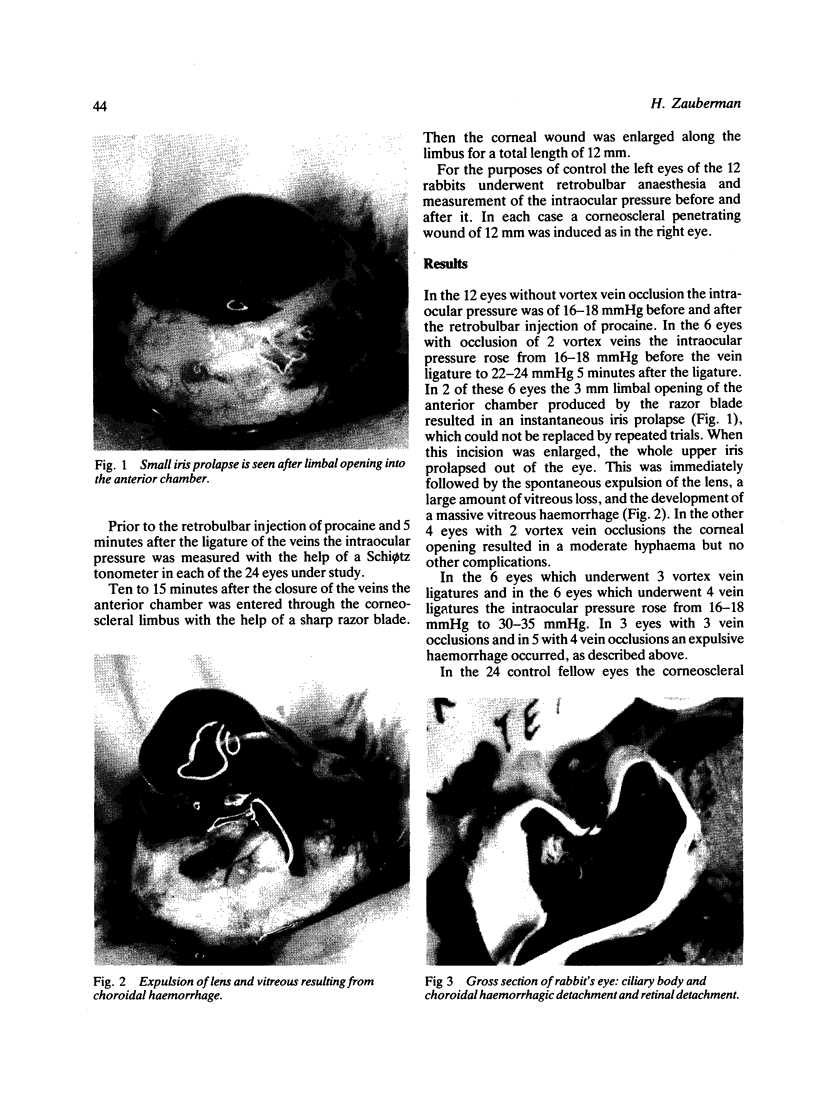
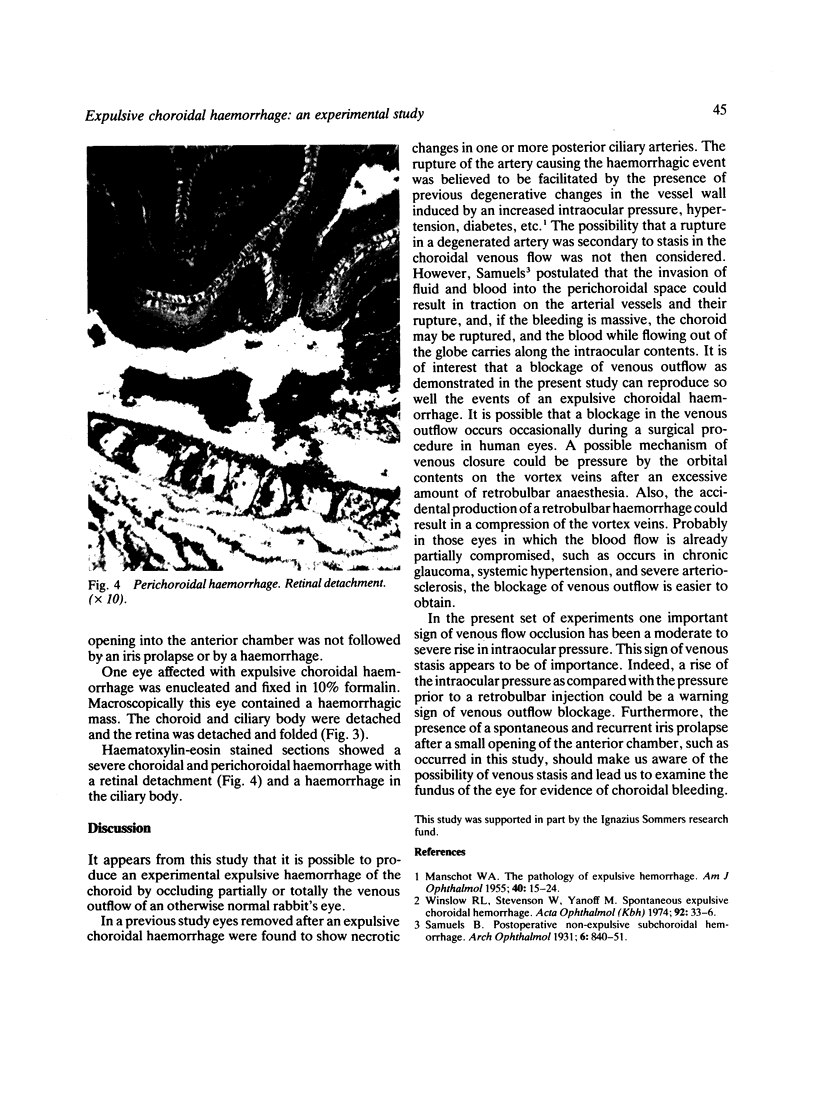
Images in this article
Selected References
These references are in PubMed. This may not be the complete list of references from this article.
- MANSCHOT W. A. The pathology of expulsive hemorrhage. Am J Ophthalmol. 1955 Jul;40(1):15–24. [PubMed] [Google Scholar]
- Winslow R. L., Stevenson W., 3rd, Yanoff M. Spontaneous expulsive choroidal hemorrhage. Arch Ophthalmol. 1974 Jul;92(1):33–36. doi: 10.1001/archopht.1974.01010010037009. [DOI] [PubMed] [Google Scholar]



